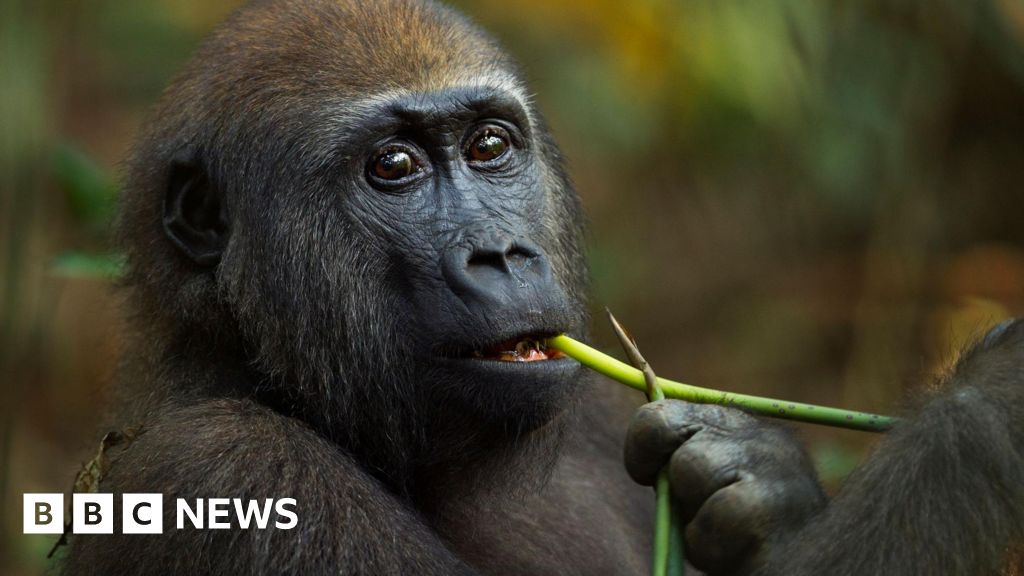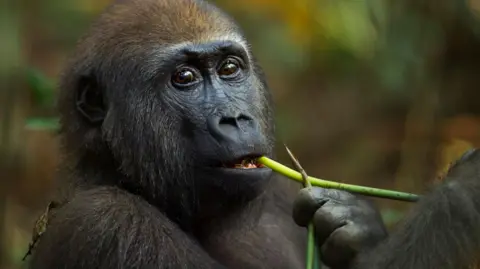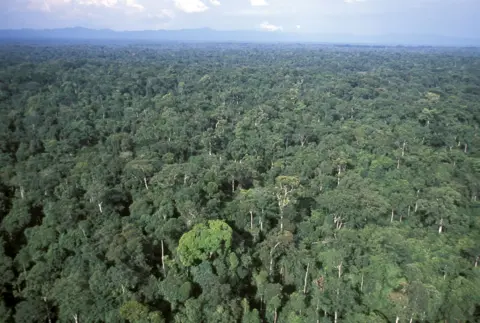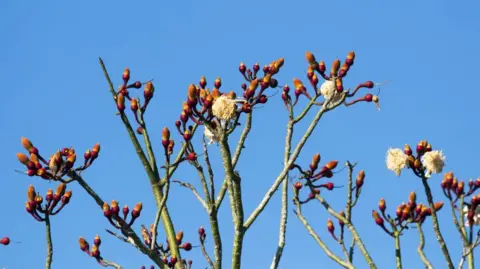
 Getty Images
Getty ImagesSelf-medicating gorillas may hold clues to future drug discovery, according to scientists.
Researchers in Gabon studied tropical plants eaten by wild gorillas – and used also by local human healers – identifying four with medicinal effects.
Laboratory studies revealed the plants were high in antioxidants and antimicrobials.
One showed promise in fighting superbugs.
 Getty Images
Getty ImagesGreat apes are known to self-medicate by selecting plants with healing properties.
A wounded orangutan recently made headlines for using a plant paste to heal an injury.
In the latest study, botanists recorded the plants eaten by western lowland gorillas in Gabon’s Moukalaba-Doudou National Park.
They selected four trees that were likely to be beneficial, based on interviews with local healers: the fromager tree (Ceiba pentandra), giant yellow mulberry (Myrianthus arboreus), African teak (Milicia excelsa) and fig trees (Ficus).
The bark of the trees – used in traditional medicine to treat everything from stomach complaints to infertility – contained chemicals with medicinal effects, from phenols to flavonoids.
 Getty Images
Getty ImagesAll four plants showed antibacterial activity against at least one multidrug-resistant strain of the bug, E. coli.
The fromager tree in particular showed “remarkable activity” against all tested strains, they say.
“This suggests that gorillas evolved to eat plants that benefit them, and highlights the huge gaps in our knowledge of the Central African rainforests,” said Dr Joanna Setchell, an anthropologist at the University of Durham, UK, who worked on the study with Gabonese scientists.
 Getty Images
Getty ImagesGabon has vast unexplored forests, which are home to forest elephants, chimpanzees and gorillas, as well as many plants unknown to science.
Poaching and disease have led to a huge number of western lowland gorillas disappearing in the wild.
They are classed as critically endangered on the International Union for Conservation of Nature’s Red List.
The research is published in the journal PLOS ONE.

